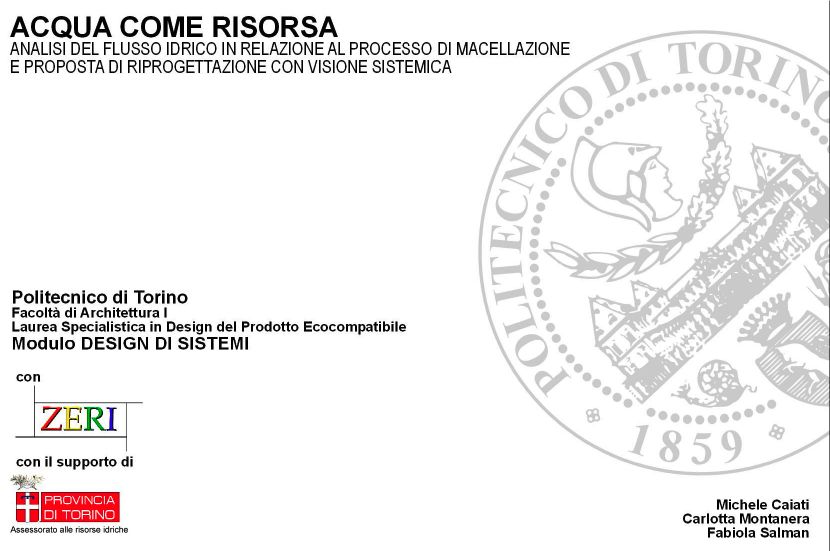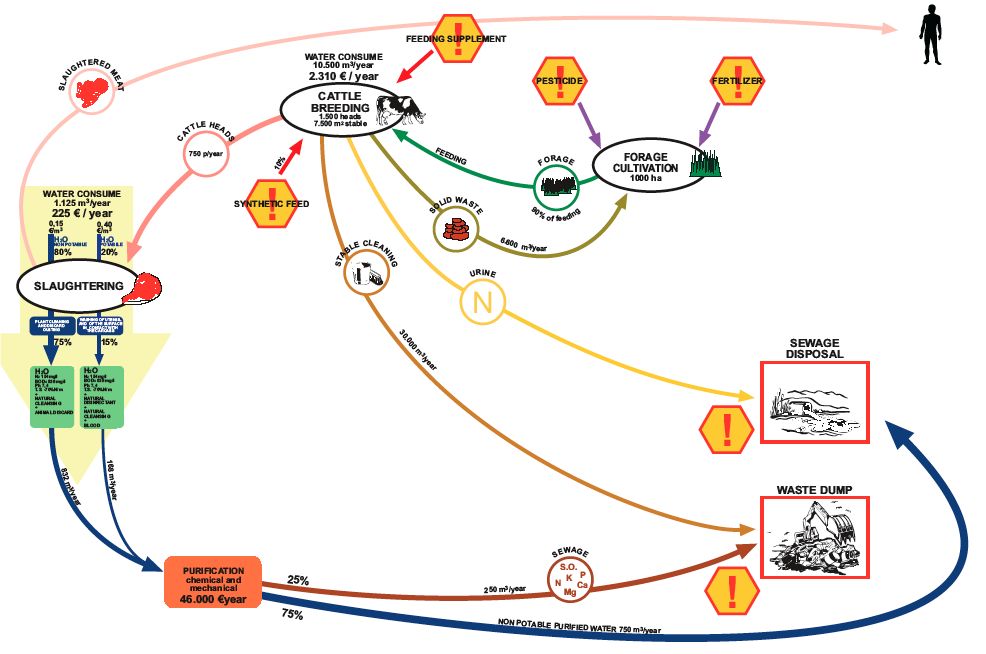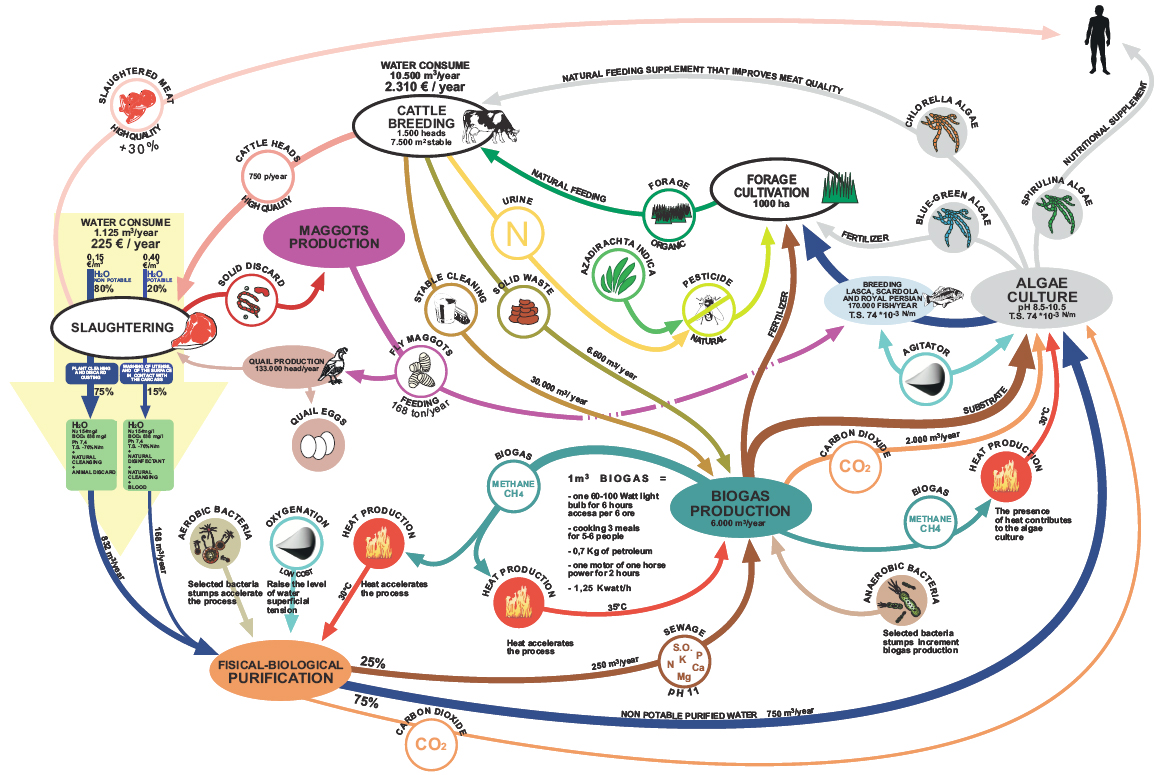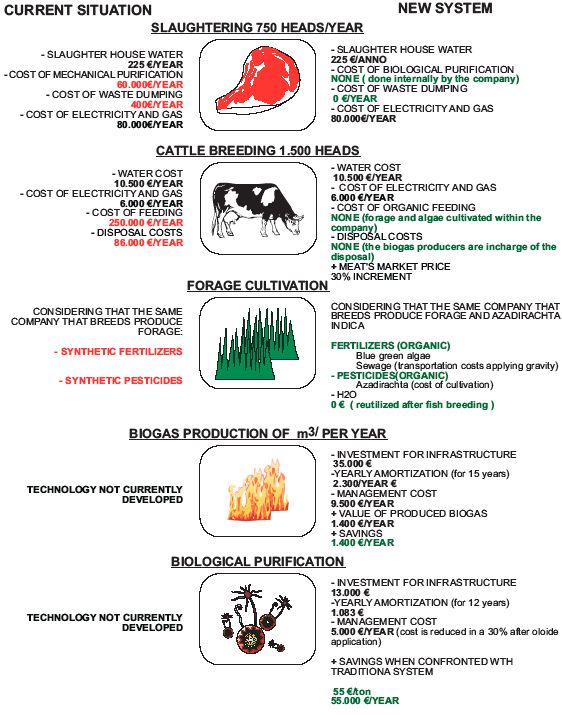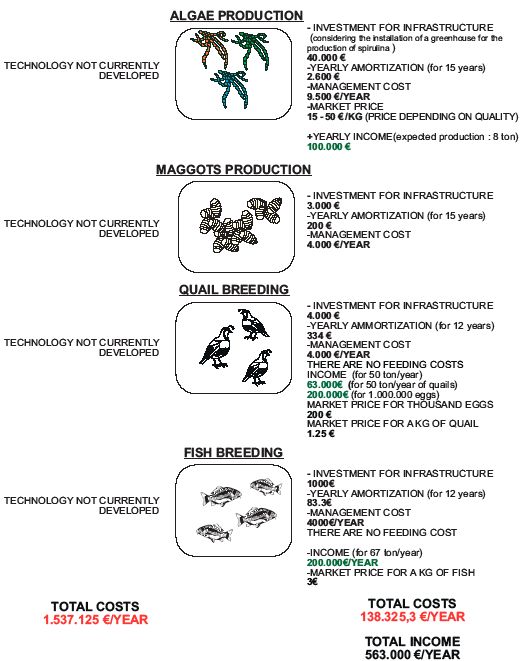Integrated Food and Waste Management System: Difference between revisions
(→Links: eliminated broken links) |
m (moved video link) |
||
| Line 28: | Line 28: | ||
=Biogas Powered Cars= | =Biogas Powered Cars= | ||
Compressed biogas from IF&WMS can be used to power cars. See this - [http://www.i-sis.org.uk/Waste-Powered-Cars.php]. This is from ISIS, who have tried Dream Farm 2 as a model IF&WMS. | Compressed biogas from IF&WMS can be used to power cars. See this - [http://www.i-sis.org.uk/Waste-Powered-Cars.php]. This is from ISIS, who have tried Dream Farm 2 as a model IF&WMS. | ||
=Videos= | |||
<html> | |||
<iframe width="420" height="315" src="https://www.youtube.com/embed/0fFIg5WLnm0" frameborder="0" allowfullscreen></iframe> | |||
</html> | |||
=Discussion= | =Discussion= | ||
1.9.09 - Integration is not easy. For the entire system to work - major, diverse infrastructure requirements exist. These may include water-tight storage vessels, ponds, vats, earth structures, containers, etc. - which at a large scale, require significant startup capital, heavy equipment and large-scale planning to implement. Materials handling is a huge requirement. | 1.9.09 - Integration is not easy. For the entire system to work - major, diverse infrastructure requirements exist. These may include water-tight storage vessels, ponds, vats, earth structures, containers, etc. - which at a large scale, require significant startup capital, heavy equipment and large-scale planning to implement. Materials handling is a huge requirement. | ||
| Line 50: | Line 52: | ||
=Links= | =Links= | ||
*Wikipedia: [https://en.wikipedia.org/wiki/Zero_waste_agriculture Zero Waste Agriculture] | *Wikipedia: [https://en.wikipedia.org/wiki/Zero_waste_agriculture Zero Waste Agriculture] | ||
*4 in 1 biogas technology from China - http://openfarmtech.org/4in1.doc | *4 in 1 biogas technology from China - http://openfarmtech.org/4in1.doc | ||
*Project by ZERI in Namibia: [http://www.zeri.org/case_studies_beer.htm Beer and Spirulina] | *Project by ZERI in Namibia: [http://www.zeri.org/case_studies_beer.htm Beer and Spirulina] | ||
*[http://www.flowman.nl/Integrated%20Bio-Systems%20%20A%20Global%20Perspective.htm "Integrated Bio-Systems : A Global Perspective"] | *[http://www.flowman.nl/Integrated%20Bio-Systems%20%20A%20Global%20Perspective.htm "Integrated Bio-Systems : A Global Perspective"] | ||
Revision as of 14:21, 23 April 2016
Main > Food and Agriculture > Soil and compost
Introduction
Integrated food systems are desirable. Here is a high level proposition. As ecological collapse moves forward, here is a regenerative proposition, which is worth pursuing and developing at all scales.
Current Production Methods: Need to be Improved
The Integrated System Proposition
Economic Analysis
Biogas Powered Cars
Compressed biogas from IF&WMS can be used to power cars. See this - [1]. This is from ISIS, who have tried Dream Farm 2 as a model IF&WMS.
Videos
Discussion
1.9.09 - Integration is not easy. For the entire system to work - major, diverse infrastructure requirements exist. These may include water-tight storage vessels, ponds, vats, earth structures, containers, etc. - which at a large scale, require significant startup capital, heavy equipment and large-scale planning to implement. Materials handling is a huge requirement.
Because of the above difficulties and others, traditional farming remains at monoculture.
One of the main keys to diversified farming is availability of equipment - which is being addressed by the Global Village Construction Set.
With basic earth moving equipment available, Factor e Farm will be implementing a system in 2009. Capacities include earth moving, pond digging, lumber generation for rot-resistent containers, and soil preparation equipment. Next in line is the genetic base.
Rasmus Kiehl 2009 collection
A large number of additional IFWMS diagrams were made by OSE contributor Rasmus Kiehl while working on the OSE wiki in 2009. This material has been archived at: http://opensourceecology.org/wiki/IFWMS-Kiehl2009Archive
Links
- Wikipedia: Zero Waste Agriculture
- 4 in 1 biogas technology from China - http://openfarmtech.org/4in1.doc
- Project by ZERI in Namibia: Beer and Spirulina
- "Integrated Bio-Systems : A Global Perspective"
